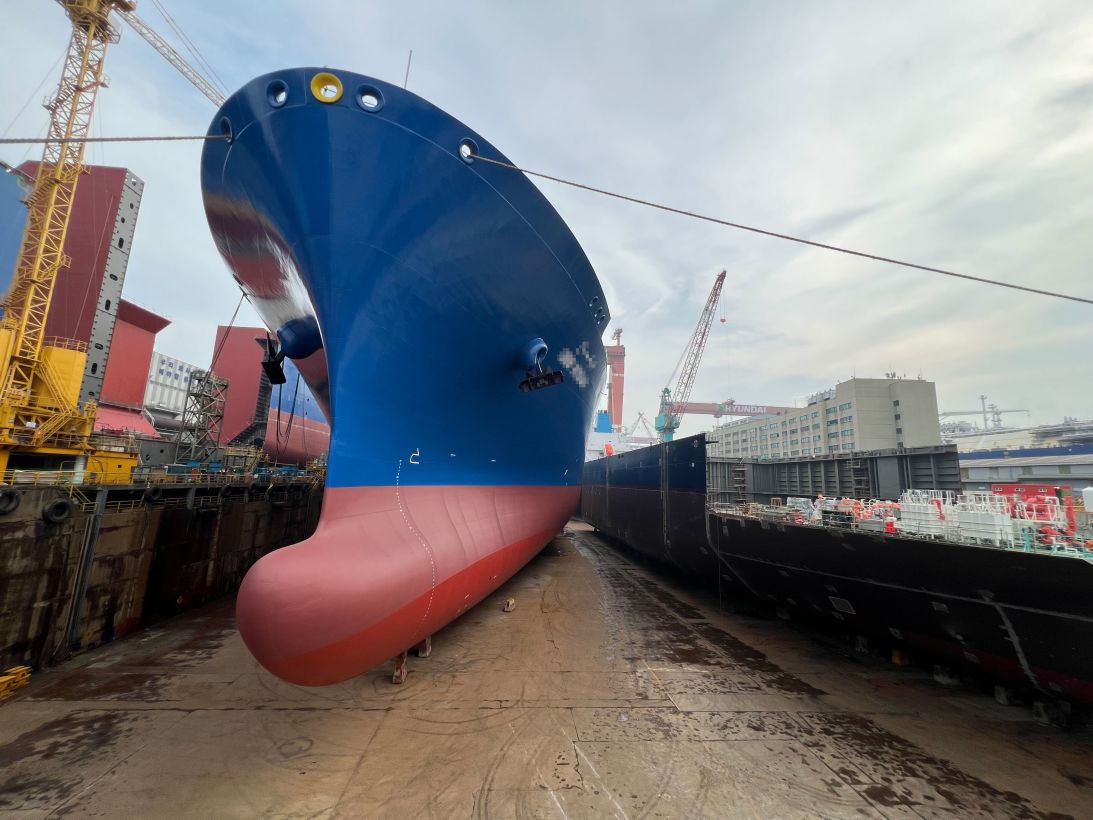World
South Korean Shipbuilders Eye US Navy Revamp Amid Crisis

The US Navy is grappling with significant challenges in its shipbuilding programs, prompting interest from South Korean companies who believe they can offer solutions. Donald Trump, the former US President, has championed the initiative to “Make American Shipbuilding Great Again.” Two prominent South Korean shipyards, run by HD Hyundai Heavy Industries in Ulsan and Hanwha Ocean in Geoje, are prepared to assist in revitalizing US naval capabilities.
The urgency of the situation was highlighted by John Phelan, the US Secretary of the Navy, who testified before a House hearing in June, stating, “All of our programs are a mess.” Phelan noted that the best program is currently six months behind schedule and over budget by 57%. Such admissions reveal a long-standing issue within the US shipbuilding sector, which has struggled with delays and cost overruns for years.
During a recent visit to the South Korean shipyards, officials demonstrated how their facilities have become leaders in efficient shipbuilding. At the Hanwha yard, construction of four new frigates for the South Korean navy is underway. The dedicated building for assembling these vessels was completed in just 14 months, showcasing the rapid pace of South Korean shipbuilding. Each 122-meter, 3,100-ton frigate is designed with advanced capabilities, including vertical launch systems for missiles and anti-submarine torpedoes.
In contrast, the US’s Constellation-class frigate program has experienced similar delays due to extensive alterations requested by the Navy, which has hampered progress. The ability of South Korean shipbuilders to deliver projects on time is attributed to their experienced workforce and efficient logistics.
Lee Jin, vice president at the Ulsan facility, highlighted that the average employee has been with the company for over 16 years, emphasizing the value of experience in shipbuilding. Sal Mercogliano, a shipping expert at Campbell University in North Carolina, noted that the flexibility of South Korean shipyards, which alternate between military and commercial projects, strengthens their workforce stability.
Historically, the US shipbuilding industry focused on military vessels while outsourcing commercial shipbuilding to countries like South Korea and Japan after World War II. Trump acknowledged this shift during a meeting with South Korean President Lee Jae Myung, reinforcing the need to regain shipbuilding prowess.
Both HD Hyundai and Hanwha are not stagnant; they continuously refine their manufacturing processes. Having both commercial and military shipyards in proximity allows for innovations and improvements that address evolving market demands. In contrast, US military shipyards often face inconsistent orders, making significant investments risky.
The efficiency of South Korean shipyards is evident in their operations. For example, at the Hyundai yard, a large hull section is moved through the facility using specialized vehicles, with workers coordinating its movement to ensure safety and efficiency. This level of organization contrasts sharply with the challenges faced by US facilities.
Despite ambitions to increase their presence in the US, South Korean companies face legal barriers. US laws currently restrict the Navy from purchasing foreign-built vessels, even from allies, due to national security concerns. Additionally, recent immigration issues involving a Korean battery plant in Georgia have raised concerns about the future of US-Korean collaboration.
A recent agreement between the US and Finland to build icebreakers in Finnish shipyards could serve as a precedent for future naval shipbuilding collaborations, although different regulations apply to the Navy and Coast Guard. Mercogliano suggested that Congress could consider loosening requirements for certain commercial vessels, potentially paving the way for increased shipbuilding cooperation with South Korea.
Hanwha’s Jeon Yu-su expressed a strong desire to see US warships constructed in the Geoje shipyard, indicating that such a partnership could significantly enhance the US Navy’s capabilities while fostering international collaboration.
As the US Navy seeks to address its shipbuilding challenges, the potential for collaboration with South Korean shipbuilders presents an intriguing opportunity. With a commitment to efficiency and innovation, South Korea may play a crucial role in shaping the future of naval capabilities for the United States.
-

 Science2 weeks ago
Science2 weeks agoIROS 2025 to Showcase Cutting-Edge Robotics Innovations in China
-

 Politics2 weeks ago
Politics2 weeks agoJudge Considers Dismissal of Chelsea Housing Case Citing AI Flaws
-

 World2 weeks ago
World2 weeks agoBravo Company Veterans Honored with Bronze Medals After 56 Years
-

 Lifestyle2 weeks ago
Lifestyle2 weeks agoStone Island’s Logo Worn by Extremists Sparks Brand Dilemma
-

 Top Stories2 weeks ago
Top Stories2 weeks agoIndonesia Suspends 27,000 Bank Accounts in Online Gambling Crackdown
-

 Sports2 weeks ago
Sports2 weeks agoMel Kiper Jr. Reveals Top 25 Prospects for 2026 NFL Draft
-

 Health2 weeks ago
Health2 weeks agoStartup Liberate Bio Secures $31 Million for Next-Gen Therapies
-

 Health2 weeks ago
Health2 weeks agoTop Hyaluronic Acid Serums for Radiant Skin in 2025
-

 World2 weeks ago
World2 weeks agoHoneywell Predicts Record Demand for Business Jets Over Next Decade
-

 Politics2 weeks ago
Politics2 weeks agoNew Jersey Voters Urged to Register Ahead of November Election
-

 Lifestyle2 weeks ago
Lifestyle2 weeks agoMary Morgan Jackson Crowned Little Miss National Peanut Festival 2025
-

 Sports2 weeks ago
Sports2 weeks agoYamamoto’s Mastery Leads Dodgers to 5-1 Victory in NLCS Game 2









